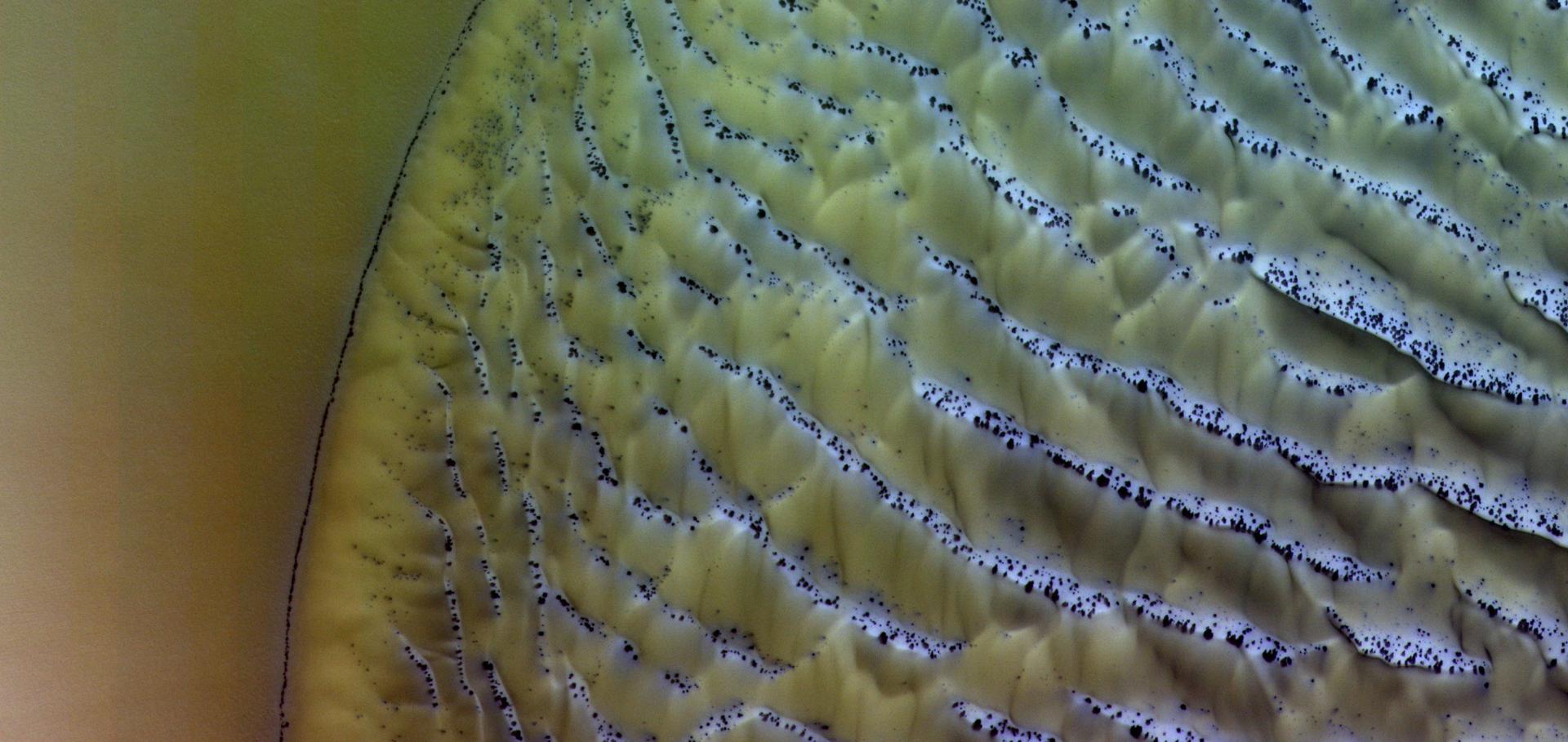Seasonal changes in the vertical structure of ozone in the Martian lower atmosphere and its relationship to water vapor
Journal of Geophysical Research: Planets Wiley 127:10 (2022) e2022JE007213
Abstract:
The mid-infrared channel of the Atmospheric Chemistry Suite (ACS MIR) onboard the ExoMars Trace Gas Orbiter is capable of observing the infrared absorption of ozone (O3) in the atmosphere of Mars. During solar occulations, the 003←000 band (3,000-3,060 cm−1) is observed with spectral sampling of ∼0.045 cm−1. Around the equinoxes in both hemispheres and over the southern winters, we regularly observe around 200–500 ppbv of O3 below 30 km. The warm southern summers, near perihelion, produce enough atmospheric moisture that O3 is not detectable at all, and observations are rare even at high northern latitudes. During the northern summers, water vapor is restricted to below 10 km, and an O3 layer (100–300 ppbv) is visible between 20 and 30 km. At this same time, the aphelion cloud belt forms, condensing water vapor and allowing O3 to build up between 30 and 40 km. A comparison to vertical profiles of water vapor and temperature in each season reveals that water vapor abundance is controlled by atmospheric temperature, and H2O and O3 are anti-correlated as expected. When the atmosphere cools, over time or over altitude, water vapor condenses (observed as a reduction in its mixing ratio) and the production of odd hydrogen species is reduced, which allows O3 to build up. Conversely, warmer temperatures lead to water vapor enhancements and ozone loss. The LMD Mars Global Climate Model is able to reproduce vertical structure and seasonal changes of temperature, H2O, and O3 that we observe. However, the observed O3 abundance is larger by factors between 2 and 6, indicating important differences in the rate of odd-hydrogen photochemistry.Seasonal reappearance of HCl in the atmosphere of Mars during the Mars year 35 dusty season
Astronomy and Astrophysics EDP Sciences 647:March 2021 (2021) A161
Abstract:
HCl was discovered in the atmosphere of Mars for the first time during the global dust storm in Mars year (MY) 34 (July 2018) using the Atmospheric Chemistry Suite mid-infrared channel (ACS MIR) on the ExoMars Trace Gas Orbiter. The simultaneity of variations in dust and HCl, and a correlation between water vapour and HCl, led to the proposal of a novel surface-atmosphere coupling analogous to terrestrial HCl production in the troposphere from salt aerosols. After seasonal dust activity restarted in MY 35 (August 2020), we have been monitoring HCl activity to determine whether such a coupling was validated. Here we present a new technique for analyzing the absorption features of trace gases close to the ACS MIR noise level and report that HCl mixing ratios are observed to rapidly increase in both hemispheres coincidentally with the onset of the MY 35 perihelion dust season. We present the temporal evolution of the vertical distribution of HCl (0.1–6 ppbv) and of dust activity in both hemispheres. We also report two observations of > 2 ppbv HCl below 10 km in the northern hemisphere during the aphelion period.Transient HCl in the atmosphere of Mars
Science Advances American Association for the Advancement of Science 7:7 (2021) eabe4386
Abstract:
A major quest in Mars' exploration has been the hunt for atmospheric gases, potentially unveiling ongoing activity of geophysical or biological origin. Here, we report the first detection of a halogen gas, HCl, which could, in theory, originate from contemporary volcanic degassing or chlorine released from gas-solid reactions. Our detections made at ~3.2 to 3.8 μm with the Atmospheric Chemistry Suite and confirmed with Nadir and Occultation for Mars Discovery instruments onboard the ExoMars Trace Gas Orbiter, reveal widely distributed HCl in the 1- to 4-ppbv range, 20 times greater than previously reported upper limits. HCl increased during the 2018 global dust storm and declined soon after its end, pointing to the exchange between the dust and the atmosphere. Understanding the origin and variability of HCl shall constitute a major advance in our appraisal of martian geo- and photochemistry.Modelling the Influence of Oxidative Chemistry on Trace Gases in Mars' Atmosphere.
(2025)
Abstract:
What goes on inside the Mars north polar vortex?
(2025)


